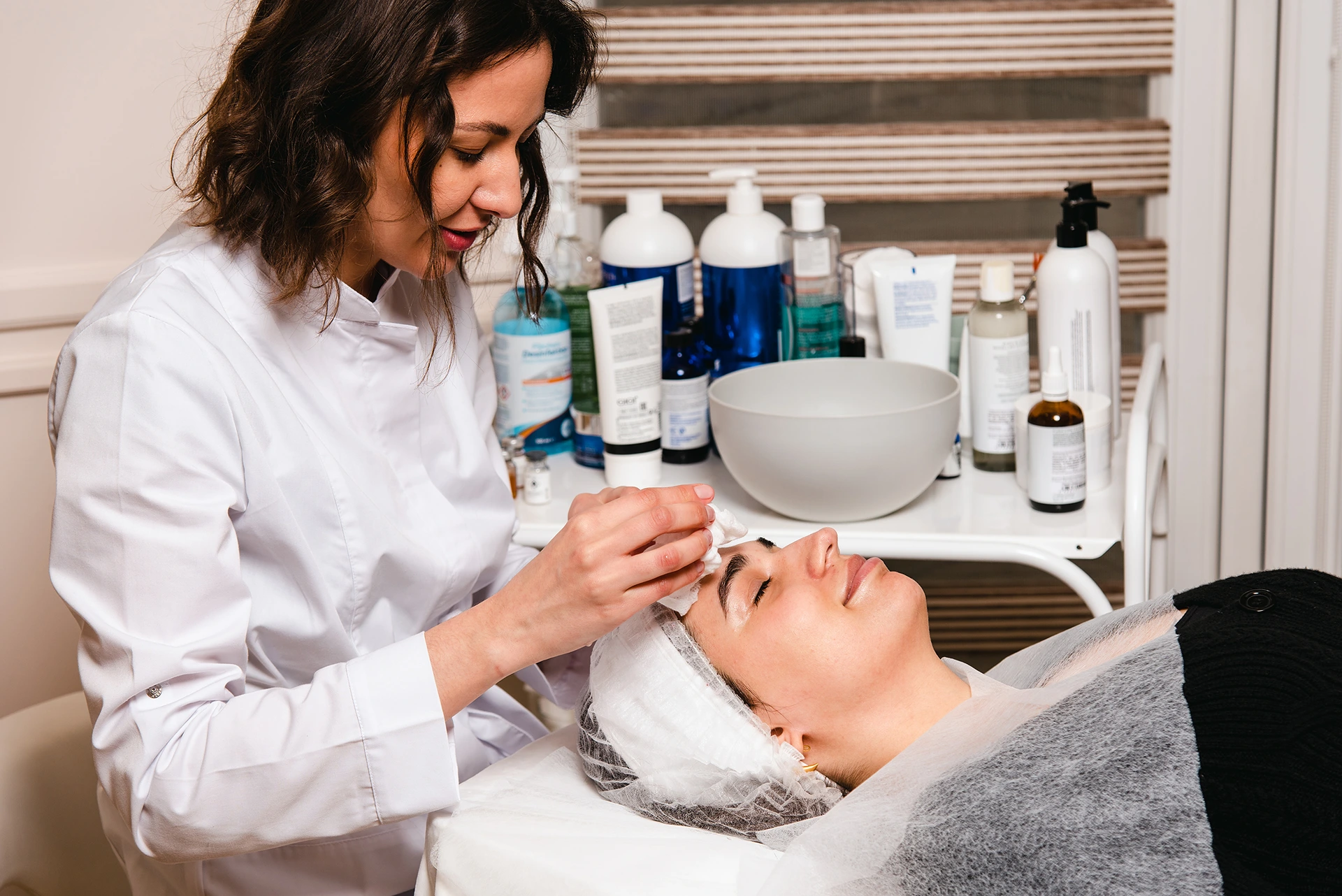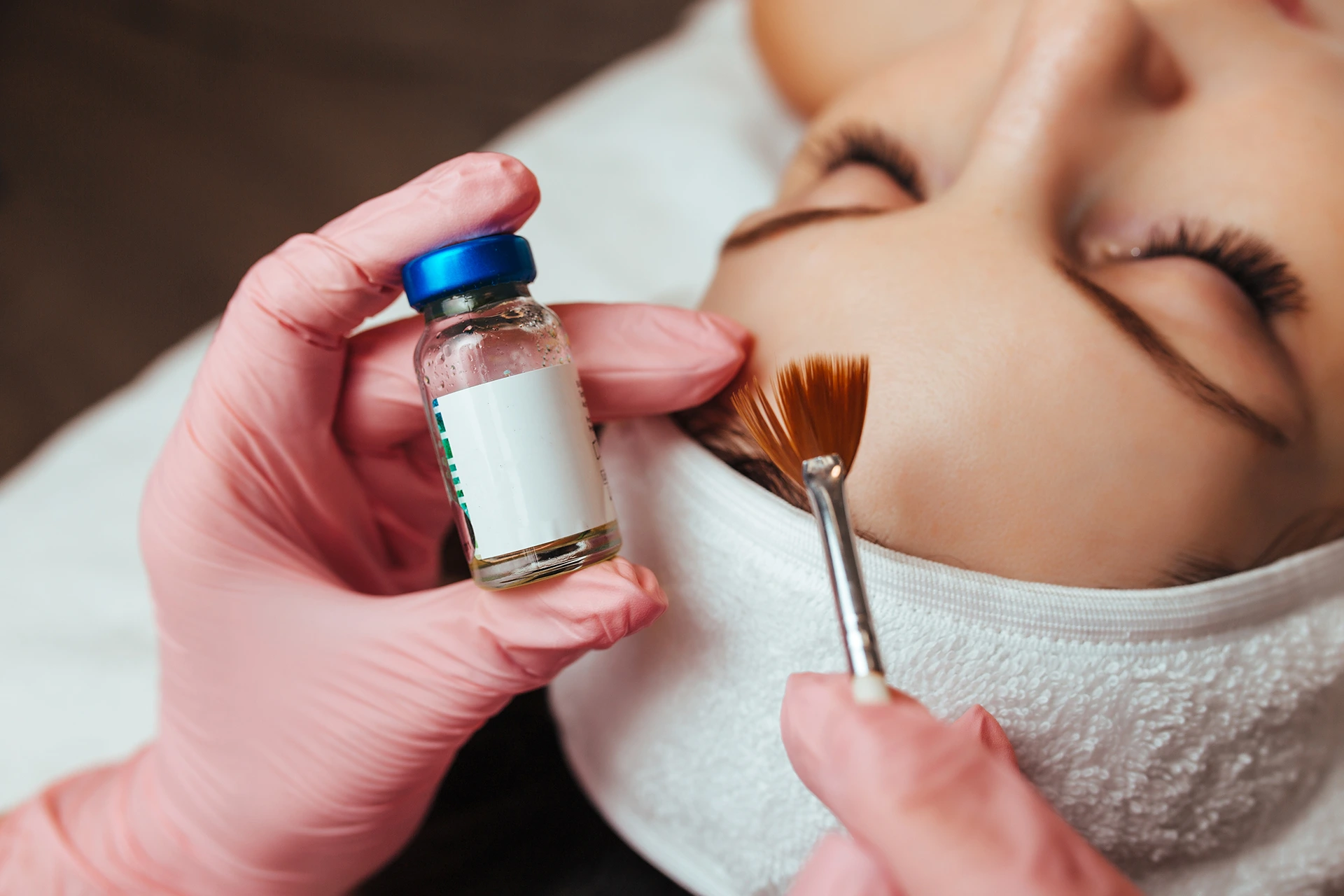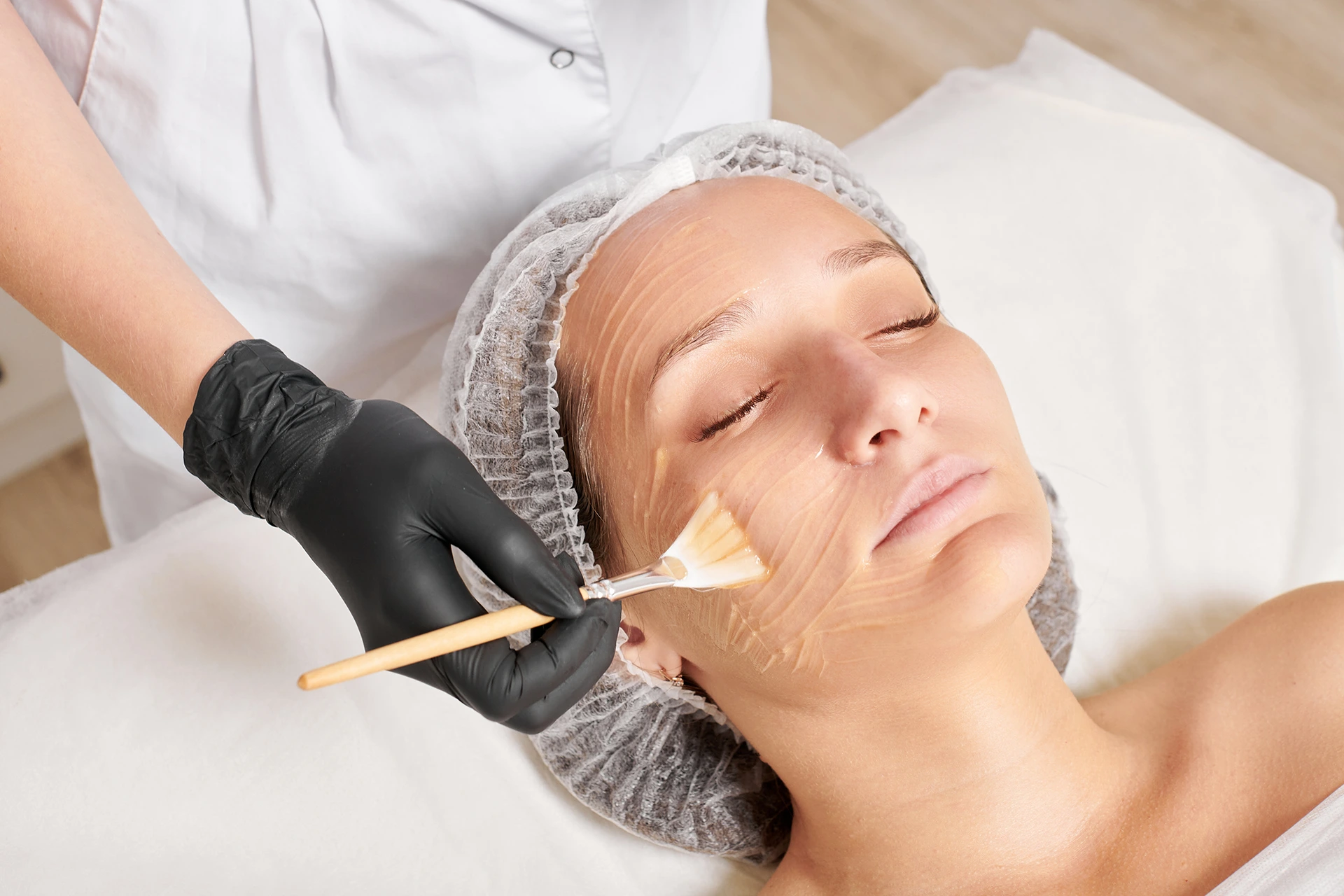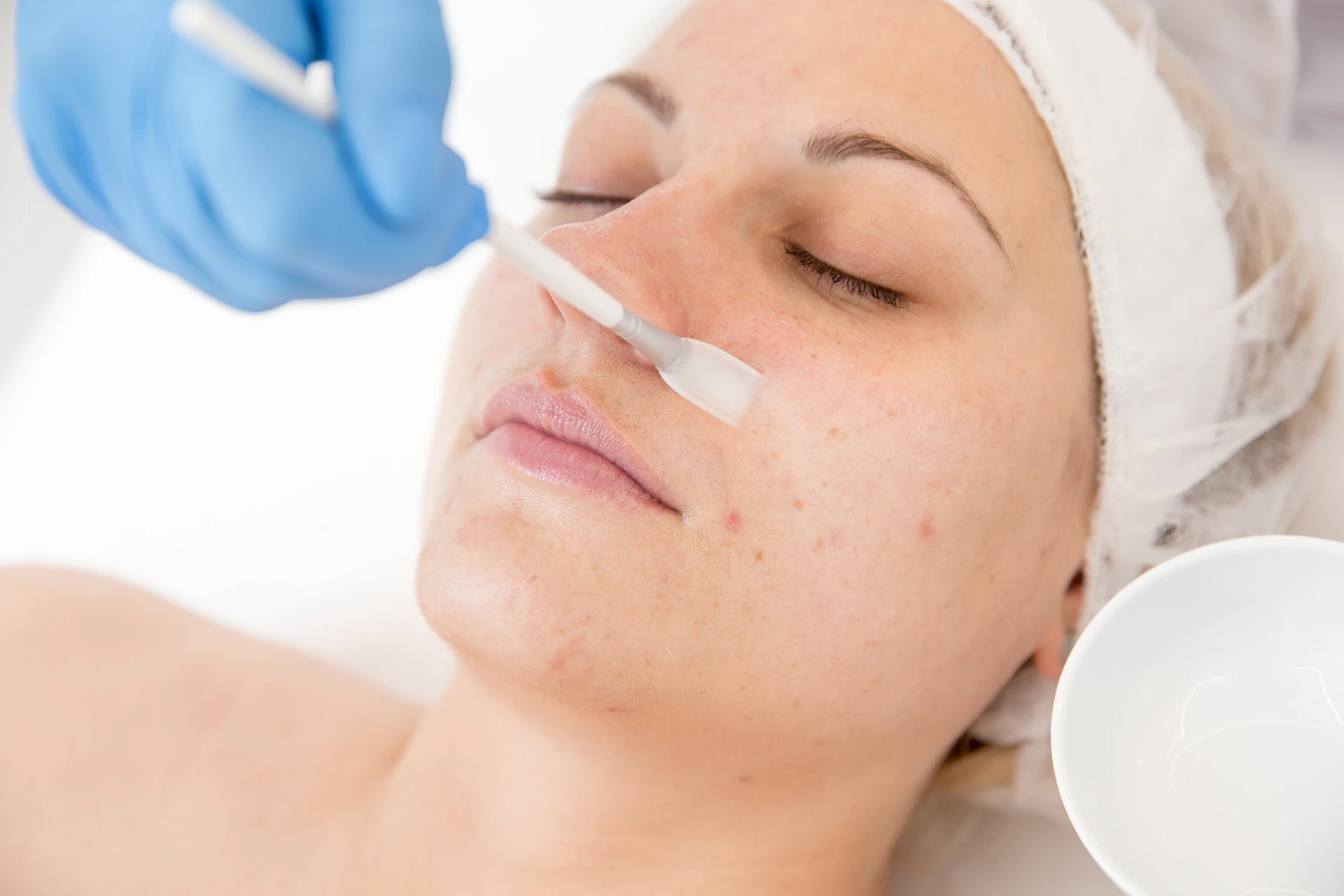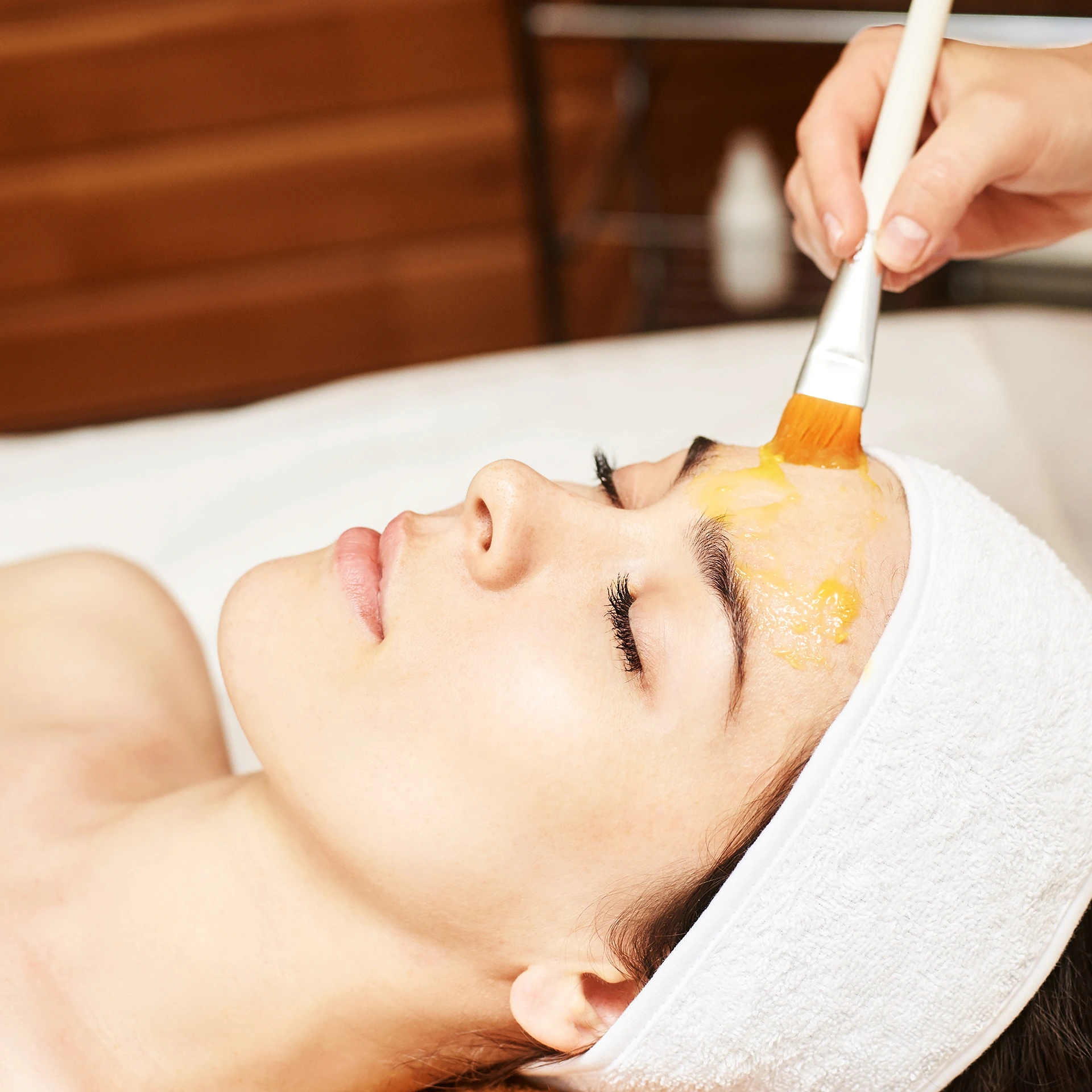Chemical Peels and Your Skin: What You Need to Know
Ever considered getting a chemical peel to reduce acne scarring, smooth wrinkles, or to just give your face a healthy glow?
But the idea of applying a chemical solution to your face makes you nervous. “Are those chemical peels really as safe and effective as they are advertised to be?” you think to yourself.
It’s important to note that when performed by a skilled and licensed dermatologist, many chemical peels are very safe for most skin types. However, deeper chemical peels do come with increased risks of side effects like scarring and pigment changes.
Those with very sensitive skin or conditions like eczema or acne may be better suited for lighter peels or alternative treatments.
The key is customizing your chemical peel regimen based on factors like your skin type, skin tone, medical history, and aesthetic goals.
How Does the Type and Depth of Chemical Peel Impact Safety?
Chemical peels are classified by their depth. The depth determines how far into the skin the chemical solution penetrates, which impacts the strength of peel and its effects on your skin.
There are three main classifications of chemical peel depths:
Light Chemical Peels
Light peels, also called superficial peels, penetrate only the outermost layers of skin using mild acids like salicylic acid, glycolic acid, or lactic acid.
Light peels are considered very safe because they provide gentle exfoliation that causes minimal irritation or downtime. They are best for treating fine lines, uneven texture, dullness, and mild acne scars.
Their gentle formula makes light peels a good introductory option if you’ve never had a chemical peel before.
Medium Chemical Peels
Medium depth peels reach the epidermis and upper parts of the dermis. They use slightly stronger acids like glycolic acid or trichloroacetic acid (TCA) at higher concentrations than light peels.
Medium peels improve age spots, deeper wrinkles, and more severe acne scarring with minimal to moderate downtime.
Medium depth peels come with moderate risks of side effects like redness, irritation, and peeling.
Deep Chemical Peels
Deep peels penetrate down into the mid-dermis using the strongest chemical solutions, such as TCA at high concentrations or phenol acid.
They pose the highest risk for side effects but provide the most dramatic results for severely sun-damaged, scarred, or wrinkled skin. Deep peels require extensive recovery time and have risks of scarring, pigment changes, infections, and more.
Therefore, deep peels may only be recommended for specific severe skin conditions that warrant the higher risk.
As you can see, the deeper the chemical peel, the more intensive the procedure and recovery is. Consulting your dermatologist on selecting the optimal peel depth for your skin goals and conditions is key to maximizing results safely.
What Role Does Your Skin Type Play in the Safety of Chemical Peels?
The characteristics and condition of your skin also factor into determining which chemical peels are safe options.
Skin Tone and Color
Those with darker skin tones have a higher risk of experiencing hypopigmentation or hyperpigmentation from chemical peels.
Therefore, lighter depth peels are generally recommended as safer options for those with darker skin tones.
Medium or deep peels can be performed safely on darker skin by an experienced provider, but require extra precautions to avoid pigment complications.
Skin Thickness and Sensitivity
Thinner and more sensitive skin has a higher risk of irritation, redness, and scarring from chemical peels.
Milder formulas and depths are safer options for delicate skin. Chemical peels may not be recommended at all for very sensitive skin conditions like eczema or psoriasis which can flare up.
Medical Conditions and History
Certain medical conditions may preclude you from chemical peels if they involve active skin infections, very dry skin, open wounds, and more.
A history of herpes or cold sores requires taking antiviral medication prior to a peel to prevent outbreaks. Keloid scarring tendencies or isotretinoin use in the last year may also restrict chemical peel usage due to scarring risks.
What are the Potential Side Effects and Risks Associated with Chemical Peels?
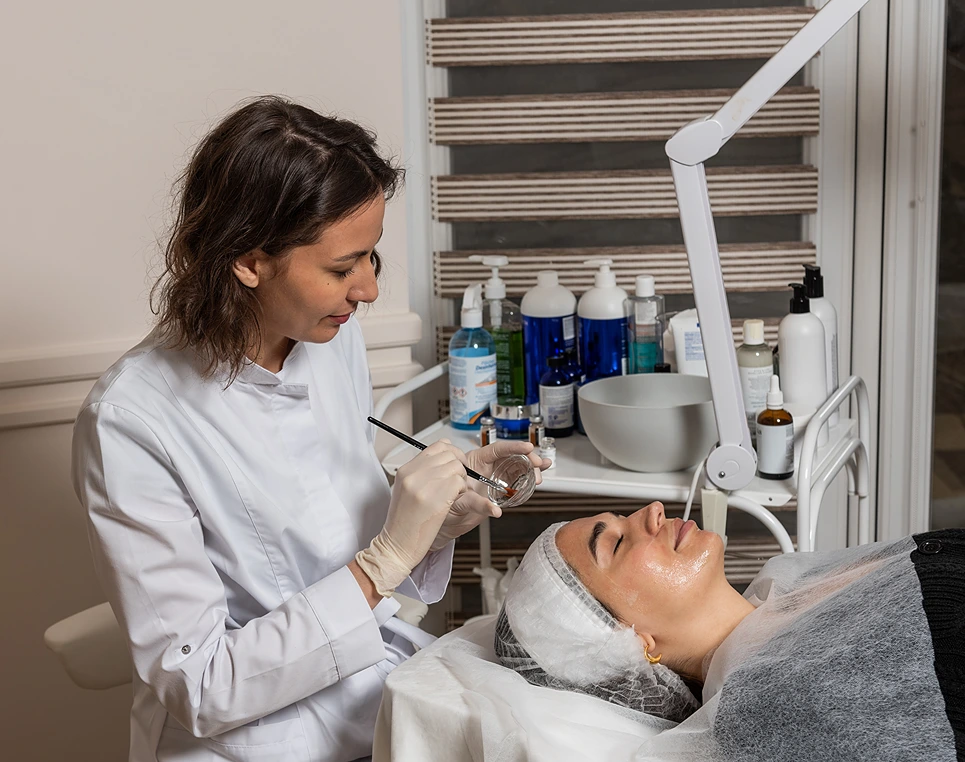
While chemical peels are generally safe when performed properly by a dermatologist, there are potential side effects and risks to consider depending on the type and depth of peel.
| Mild Side Effects | Moderate Side Effects | Severe Side Effects |
| Redness, irritation, drynessTemporary peeling, flaking, scabbingDarkened skin discolorationAcne breakouts | Prolonged redness lasting for weeks or monthsModerate peeling and scabbingChanges in skin pigmentation or texturePost-inflammatory hyperpigmentation, especially in darker skin tones | Permanent hypopigmentation or hyperpigmentationInfection of the skinAllergic reaction with rash, blistering, severe swellingPermanent scarring and changes in skin textureActivation of cold sores or herpes simplex |
To help mitigate risks, your dermatologist will provide proper preparation protocols like antiviral medication if needed, avoiding certain medications prior to peel, proper skin conditioning. They will also review post-peel care to prevent infections and minimize side effects like icing the skin and avoiding sun exposure while healing.
Preparation is Key for a Safe Peel
Reputable spas will talk through your goals, skin issues, and medical history at a consultation visit before the peel. Be honest about any conditions like:
- Active cold sores or warts
- Skin sensitivity
- Use of retinoids, benzoyl peroxide, antibiotics, or photosensitizing medications
- History of herpes or keloids
- Recent chemical peel or facial waxing
This allows them to assess risks, avoid complications, and pick the appropriate peel type and strength. They may prescribe antivirals, topical retinoids, or hydroquinone creams to use for a few weeks beforehand that prevents infection and prepares the skin.
How to Choose the Right Peel for Your Skin Type and Concerns
With so many acids and strengths of chemical peels, how do you pick the best one for your needs? Here are some tips:
Glycolic or lactic acid peels are great starter peels for normal skin. They provide light exfoliation and glow. Not suitable for sensitive skin.
Those with oily, acne-prone skin benefit from salicylic acid peels to clear pores and prevent breakouts.
Sensitive, rosacea-prone skin tolerates mild lactic acid or PHAs like gluconolactone better than other acids.
Aging skin with sun spots and wrinkles does well with glycolic acid or medium-depth TCA peels.
Thicker skin types like men may need a stronger TCA or phenol peel to get results.
Darker skin tones are at higher risk of pigment changes. Gentler lactic acid or PHA peels are safest.
Talk to your esthetician about your goals, skin type, sensitivities, and ethnic background to determine the best peel for you. It’s always better to start conservatively with lighter peels, then work up to stronger ones as your skin tolerates them.
How to Make the Most of Your Peel Treatment
Here are some tips to prep your skin for a peel and optimize results:
- Avoid unprotected sun exposure for 2-4 weeks pre- and post-treatment. Chemical peels make skin very sensitive to sunburn.
- Drink lots of water and eat antioxidant-rich fruits and veggies to nourish skin.
- Apply antiviral medication if prescribed to prevent cold sore outbreaks.
- Take an antihistamine or painkiller beforehand if recommended to minimize discomfort.
- Be gentle with skin for 1-2 weeks after. Avoid makeup, scrubbing, sweating, swimming, waxing, lasers, etc.
- Use bland moisturizers and sunscreen religiously while peeling.
- Repeat treatments every 4-6 weeks until you achieve desired results.
While the process sounds intensive, following proper peel aftercare reduces risks of complications and side effects. Be patient through the ugly duckling peeling stage, and you’ll be rewarded with beautiful, glowing skin!
Conclusion: Are Chemical Peels Right for You? Key Takeaways
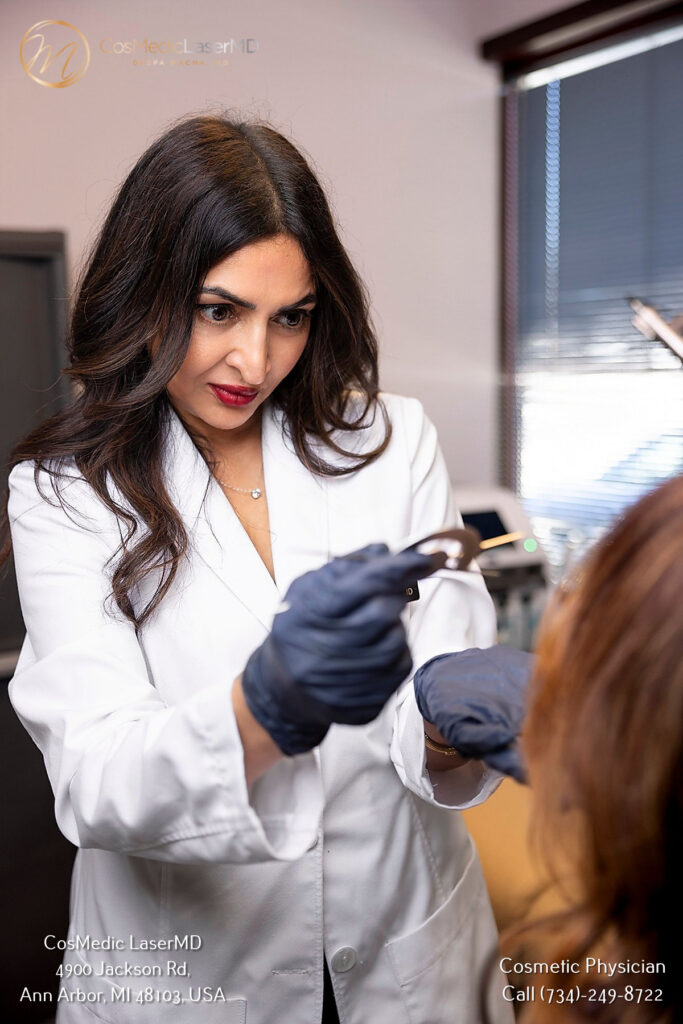
Despite horror stories and misinformation online, medical evidence shows that chemical peels performed correctly by licensed professionals are very safe for most people. Right for you if you:
- Have sun damage, scars, wrinkles, or dull skin you want to improve
- Use sun protection and skin-nourishing products to maintain results
- Accept the social downtime required for medium and deep peels
- Are willing to invest the time and money for multiple treatments
Not right for you if you:
- Have very sensitive skin or keloid scarring tendency
- Can’t avoid sun exposure for weeks before and after
- Aren’t able to take time off work to heal from peeling skin
- Only want dramatic improvements with a single treatment
While not for everyone, chemical peels can transform lackluster skin—when done the right way. Do your research, find an experienced provider, and set realistic expectations. You’ll likely be thrilled with your refreshed, radiant skin.
Our experts at CosMedic Laser MD can help assess if a chemical peel is right for you, and if so, create a tailored treatment plan with proper pretreatment and post-treatment protocols. With their guidance, chemical peels can be a safe method for revealing beautiful, youthful skin.

